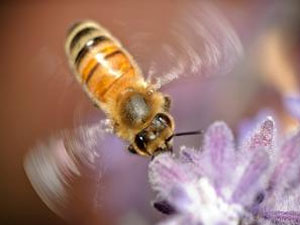Halogenated Bipyrroles and Methoxylated Tetrabromodiphenyl Ethers inTigerShark(Galeocerdocuvier) fro
时间:2009-04-18 阅读: 我要评论:
 and Tetsuya Endo‡ Daiichi College of Pharmaceutical Sciences, Fukuoka 815-8511, Japan, Faculty of Pharmaceutical Sciences, Health Sciences University of Hokkaido, Hokkaido 061-0293, Japan, School of Marine Biosciences, Kitasato University, Ofunato, Iwate 022-0101, Japan, and Kagawa School of Pharmaceutical Sciences, Tokushima Bunri University,1314-1 Sanuki Kagawa 769-2193, JapanEnviron. Sci. Technol., 2009, 43 (7), pp 2288–2294DOI: 10.1021/es802999kPublication Date (Web): March 4, 2009Copyright © 2009 American Chemical Society * Corresponding author phone: +81-92-541-0161; fax: +81-92-553-5698; e-mail: k-haraguti@daiichi-cps.ac.jp., †
and Tetsuya Endo‡ Daiichi College of Pharmaceutical Sciences, Fukuoka 815-8511, Japan, Faculty of Pharmaceutical Sciences, Health Sciences University of Hokkaido, Hokkaido 061-0293, Japan, School of Marine Biosciences, Kitasato University, Ofunato, Iwate 022-0101, Japan, and Kagawa School of Pharmaceutical Sciences, Tokushima Bunri University,1314-1 Sanuki Kagawa 769-2193, JapanEnviron. Sci. Technol., 2009, 43 (7), pp 2288–2294DOI: 10.1021/es802999kPublication Date (Web): March 4, 2009Copyright © 2009 American Chemical Society * Corresponding author phone: +81-92-541-0161; fax: +81-92-553-5698; e-mail: k-haraguti@daiichi-cps.ac.jp., † Daiichi College of Pharmaceutical Sciences.
, ‡Health Sciences University of Hokkaido.
, §Kitasato University.
,
Tokushima Bunri University.
Abstract
Naturally produced halogenated bipyrroles (HBPs) and methoxylated tetraBDEs (MeO-tetraBDEs) are lipophilic and persistent, and therefore may bioaccumulate with higher trophic levels. In this study, the livers of tiger shark (Galeocerdo cuvier) collected from the southern coast of Japan were investigated for size-related bioaccumulation of natural HBPs and MeO-tetraBDEs in comparison with anthropogenic PCBs and PBDEs. Heptachloro-1′-methyl-1,2′-bipyrrole (Cl7-MBP) and hexahalogenated 1,1′-dimethyl-2,2′-bipyrrole (Br4Cl2-DBP) were present at similar concentration ranges (4−4400 ng/g lipid) in the liver and increased with increasing body length. Two MeO-tetraBDEs, 6-methoxy-2,2′,4,4′-tetrabromodiphenyl ether (6-MeO-BDE47), and 2′-methoxy-2,3′,4,5′-tetrabromodiphenyl ether (2′-MeO-BDE68) were present at 4- to 6-fold higher concentrations (88 and 58 ng/g lipid, respectively) than BDE-47. In mature tiger sharks, 2,2′-dimethoxy-3,3′,5,5′-tetrabromobiphenyl (2,2′-diMeO-BB80) was present at a median concentration of 330 ng/g lipid. Concentrations of 6-MeO-BDE47 were positively correlated to body length (P < 0.01), but no such correlation was observed for 2′-MeO-BDE68 and 2,2′-diMeO-BB80. The concentration ratios (patterns) of PBDE-like natural products in tiger sharks were largely different from that found in other species, such as the bull shark (Carcharhinus leucas), the silvertip shark (Carcharhinus albimarginatus), and the sandbar shark (Carcharhinus plumbeus). The present study suggests that the concentrations of natural HBPs in the liver are size (age)-dependent whereas MeO-tetraBDEs have species-specific biomagnification potentials.
本栏目最近更新
特别声明:本文转载仅仅是出于传播信息的需要,版权归原作者所有,并不意味着代表本网站观点或证实其内容的真实性; 如其他媒体、网站或个人从本网站转载使用,须保留本网站注明的“来源”,并自负版权等法律责任; 作者如果不希望被转载或者联系转载稿费等事宜,请与我们接洽:service#environmentor.cn(请将#改为@)。
来源: 作者: (环境人 Environmentor.Cn)





